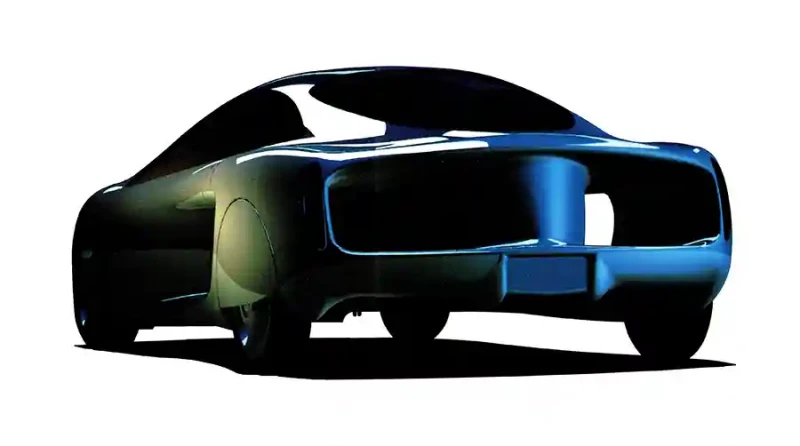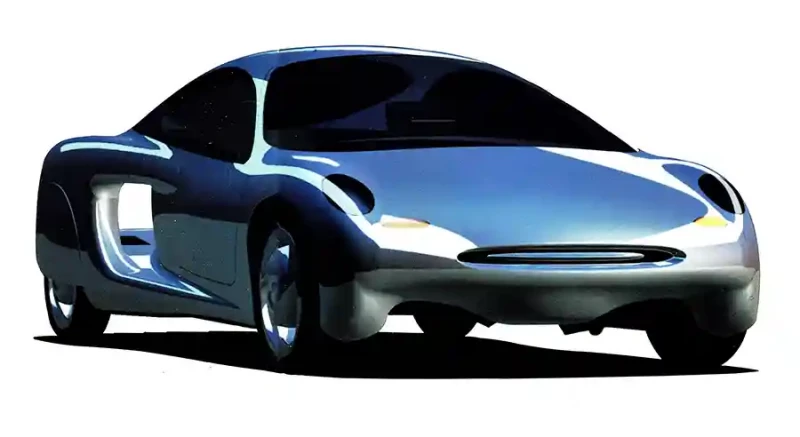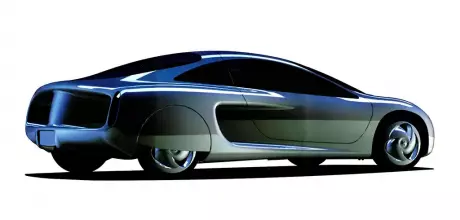1994 Dodge Aviat
Chrysler briefly re-energised the concept car phenomenon in the Nineties, something that launched nameplates as familiar as the P/T Cruiser, the Plymouth Prowler and the Neon. And it was this latter model that was used as the basis for a concept that never made production: the Aviat…
From here to obscurity
Chrysler turned around concept cars during the Nineties with bewildering regularity. It almost seemed as though a week didn’t pass by without news of another show queen being released, each being more daring than the one that preceded it. Some hinted at forthcoming production models, others offered subtle nods to the past, but with a theatrical twist, while a few defied belief as much as description. The Aviat was something of an anomaly in that it was based on a production model that had in itself been trumpeted by a concept car – the Dodge/Plymouth Neon. It was created to explore the idea of expanding the range beyond the two existing body styles, and as such the Aviat borrowed much of its base architecture from the Neon.

Accordingly, it had a DOHC 16-valve four-cylinder engine up front that produced a giddying 145bhp. That, and a front-wheel drive layout. It also appropriated some styling cues, but only around the nose area. The rest was pure sci-fi whimsy. Unveiled at the 1994 North American International Auto Show, the prototype featured the obligatory scissor doors which denoted a true exotic, the signature feature being the sculptured bodywork aft of the doors. The car’s cooling system was purportedly sited in the rear, cooling airflow being ducted through the outrigger-style rear wings. The rear wheels were also skirted in a bid to further reduce drag. The Aviat allegedly boasted a drag coefficient of just 0.20cd which, if true, was – and remains – staggeringly low.

The brochure talked up a storm about this flight of fantasy: “The premise behind a sports coupe is simple: build a car that’s low to the ground, quick, powerful and agile,” it gushed. “Those are quantifiable responses. But a sports coupe must also perform another function that is not measured by means of a stopwatch or a skid pan. It must also move both body and soul. Aviat responds to that challenge.” Just to ramp up a sense of awestruck wonder in the reader, the last five words were highlighted in bold type. It also claimed the car was of unitary construction with all-steel bodywork, the Aviat being 1298mm (51.1in) high, 4287mm (168.8in) long, and 1839mm (72.4in) wide. The rear track was also eight inches wider than at the front.
The promotional spiel went on to add: “Inside, Aviat presents a straightforward approach: instrumentation with an accent on efficiency. It’s evident in the instrument panel that moves with the adjustable steering column to keep all gauges in view at all times and in the multifunction switch that controls the radio, fan and temperature settings. Furthermore, Aviat’s seats are designed to be supportive but lightweight. But don’t think of Aviat as a lightweight when it comes to performance…” And so on. The Aviat promised to redefine the sports coupe, but it remained only a show car. It was drivable, though, if only very slowly for the cameras, but it didn’t foretell an ultra-low drag Neon production car. As for the fate of the prototype, your guess is as good as ours.
A rear end that only a mother could love…
TECHNICAL DATA 1994 Dodge Aviat
ENGINE
- 2.0-Liter inline 4
- Double Overhead Cam
- 16 Valves
- 145 Horsepower (Est)
DRIVETRAIN
- Five-Speed Manual Transaxle
- Front-Wheel Drive
BODY
- Two-Door Coupe
- All-Steel Unitized Construction
SUSPENSION
- Front Macpherson Strut
- Rear Unequal Length «A»
DIMENSIONS
(Inches)
- Wheelbase 108.5
- Overall Length 168.8
- Overall Width 72.4
- Overall Height 52.1
- Front Track 57.4
- Rear Track 63.3
TIRES
- Front: P175/50R18
- Rear: P145/60R18
FANTASTIC FLIGHT
The premise behind a sports coupe is simple: build a car that’s low to the ground, quick, powerful and agile. Those are the quantifiable responses. But a sports coupe must also perform another function that is not measured by means of a stopwatch or a skid pad. It must move both body and soul. Aviat responds to that challenge.
It begins with Aviat’s fluid, aircraft-like design that was created by incorporating advanced aerospace computer technology. The result is a car with fantastic visibility and a coefficient of drag of a mere 0.20. By comparison, today’s world-class sedans are in the 0.30 range.
Inside, Aviat presents a straightforward approach: instrumentation with an accent on efficiency. It’s evident in the instrument panel that moves with the adjustable steering column to keep all gauges in view at all times and in the multifunction switch that controls the radio, fan and temperature settings. Furthermore, Aviat’s seats are designed to be supportive yet lightweight.
But don’t think Aviat is a lightweight when it comes to performance, because it's powered by a world-class 2.0-liter, double overhead cam, 16-valve engine that produces an estimated 145 horsepower. Combine that kind of horsepower with a vehicle this lightweight and aerodynamic, and the rewards are beyond the imagination.
Aviat — A Redefinition of the Sports Coupe!
About this flyer: The vehicle described in this literature is an experimental concept car under continuing development. We have tried to make this information as complete and accurate as possible. However, since the time of printing, some of the information you’ll find here may have been updated.


